L-Track vs. Unistrut: Which is Right for Your Van Build?

Hey everybody, Matt here for AVC, and welcome back to the shop! Since we released our Unistrut install video (a long time ago might I add), we've been flooded with questions about why we often prefer Unistrut over the more common L-track in our van builds. So, we decided to dedicate a special post just for you to dive deep into the pros and cons of each. Let's get to work!
When planning your van's interior, deciding on a mounting system is crucial. Both L-track and Unistrut offer ways to secure items, but they excel in different areas. Let's break down each one.
The Industry Standard: L-Track

L-track has become synonymous with van life, seen everywhere from professional builds to DIY projects. And for good reason – it's a solid product with definite advantages.
L-Track Pros:
-
Easy Cargo Tie-Down: As its name ("load track") suggests, L-track is designed for tying down cargo. Its quick-release fittings allow for easy, tool-free securing of bikes, motorcycles, or any gear you need to hold in place temporarily. This is why you often see it on airplane floors for securing seats!
-
Indexed System: The tabs along the track are spaced every inch, providing a consistent indexing for tie-downs.
-
Aesthetic & Finish: L-track's profile, particularly versions with "wings," can capture unfinished edges of flooring or wall panels, creating a clean, professional look. This is why we still use L-track in our floors!
-
Lighter Weight: Being aluminum, L-track is inherently lighter than steel Unistrut. While the overall weight difference in a van might only be about 25 pounds (for roughly 26 feet of track), every pound can count.
-
Corrosion Resistance: Aluminum doesn't rust, so you don't need to prime or seal cut edges, making installation simpler.

L-Track Cons:
-
Specialty Hardware & Cost: Almost everything for L-track is specialized. Fittings can be significantly more expensive than standard hardware (think $5+ per fitting compared to cents for a bolt).
-
Availability & Delivery Times: You can't just run to a local hardware store for L-track specific parts. If you're in a pinch, you'll likely face delivery delays.
-
Strength Limitations (Aluminum): While strong, aluminum isn't as robust as steel. For cantilevered applications (where a bolt supports weight at one end of the track), aluminum will show more deflection and, if overloaded, will deform permanently. This is critical if you're thinking about mounting heavy items or using it for seating (ensure you get the correct, specialized aluminum for seating applications).
-
Drilling & Alignment Challenges: If you need to drill a hole that doesn't align with the one-inch increments, it can be tough. It also doesn't perfectly line up with the factory mounting holes in a Ford Transit, which can complicate certain installations.
-
Limited Aesthetics: Generally, L-track has a very distinct, industrial look. While there are different form factors (chamfered, square, lipped), the overall aesthetic is consistent.
The Commercial Workhorse: Unistrut

Unistrut might be new to the van life scene, but it's a veteran in the building industry, commonly used for hanging conduit, electrical boxes, and other utilities in commercial buildings. Once you start recognizing it, you'll see it everywhere!
Unistrut Pros:
-
Widespread Availability: This is a huge advantage! You can find Unistrut at almost any big box store, electrical supplier, or even local hardware stores. No waiting for special deliveries.
-
Affordable Hardware: Unistrut uses standard 3/8-inch hardware (though other sizes are available), which is incredibly cheap and easy to find. A bolt for Unistrut could be 8 cents compared to $5+ for an L-track fitting. The Unistrut material itself is also significantly cheaper than L-track.
-
Universally Adjustable: This is one of the biggest reasons we love it! Strut nuts can slide freely along the channel, allowing for infinite adjustability. If you need to shift a cabinet by a quarter of an inch, you can easily do so.
-
Drill Anywhere: With its solid back, you can drill holes anywhere along the Unistrut to perfectly align with factory mounting points (like the 8mm dezerts in the Ford Transit), offering unparalleled flexibility.
-
Superior Strength (Steel): Unistrut is stronger than L-track, especially in cantilevered applications. Our 12-gauge steel version is incredibly robust, making it ideal for permanently mounting heavy items or for situations where maximum strength is required.
-
Variety of Hardware: Unistrut boasts a huge variety of strut nuts and fittings in different thread patterns, styles (e.g., with or without springs), and sizes, catering to almost any mounting need.

Unistrut Cons:
-
Heavier: As steel, Unistrut is heavier than aluminum L-track. Expect your van to be about 25 pounds heavier if you use Unistrut exclusively where you might have used L-track.
-
Needs Coating/Sealing: Raw steel will rust. If you cut Unistrut (even if you buy it pre-coated like our phenolic resin-coated "super green" version), you must prime and seal the cut ends to prevent rust in your vehicle. For our shop builds, we powder coat them locally.
-
Not the "Van Life Standard": While incredibly functional, Unistrut doesn't have the same "pretty" aesthetic associated with many Instagram-worthy van builds that exclusively feature L-track.
-
Deeper Profile: Unistrut's deeper profile makes it less ideal for recessed applications, like integrating flush with flooring, as it doesn't have a natural "cap" or edge to capture the flooring. This is precisely why we don't use Unistrut in our floors.
The Verdict: Both Have Their Place!
At AVC, we firmly believe both L-track and Unistrut are great products, and each has its rightful place in a van build:
-
Choose Unistrut for: Permanent mounting of cabinets, utilities, and heavy-duty items. It's stronger, more universally adjustable, generally cheaper, and easier for a DIYer to acquire and work with, especially when precise alignment with factory points or cantilever strength is needed. We've even designed end caps for our Unistrut to give it a finished, purposeful look where exposed!
-
Choose L-Track for: Temporary cargo tie-downs, recessed floor applications, or anywhere a clean, encapsulated edge is desired. Its quick-release functionality and aesthetic benefits for flooring truly shine here.
Ultimately, the best choice depends on your specific needs, budget, and desired functionality for each part of your van build. Don't be afraid to mix and match!
What are your thoughts? Do you have a different opinion or see something we missed about L-track or Unistrut? Let us know in the comments below – we'd love to chat with you about it!

